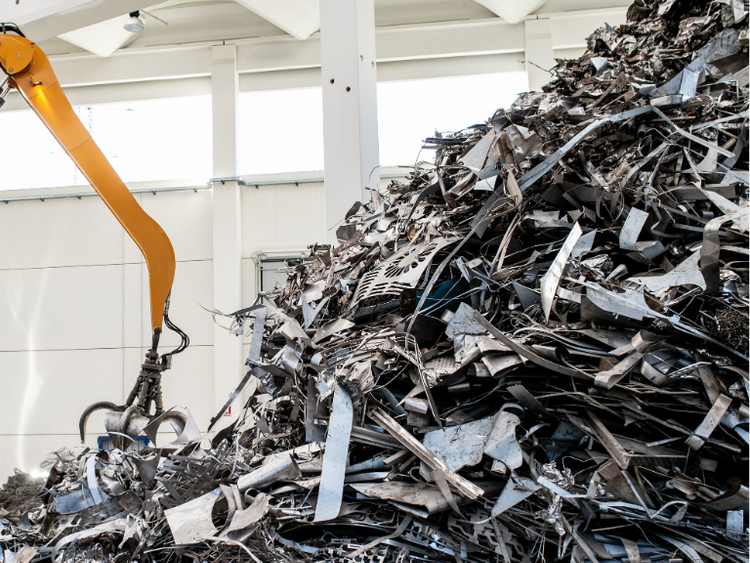Market

September 24, 2024
Let’s lay it all out: The ups and downs and what’s affecting next year’s progress
Written by Gabriella Vagnini
At this year’s Recycled Materials Association Roundtable Conference, the conversation hasn’t been about prices or securing deals for next year. Everyone’s holding off, and no one seems sure of what’s going on. Of course, that’s nothing we don’t already know.
There are so many variables in play that it’s left the market in a state of uncertainty. Just last week at the conference in Kentucky, there were discussions about someone selling at 83% off the Midwest Transaction Premium (MTP) for UBC, which is frankly absurd. How do those margins even work? They’d be taking a loss unless they’ve already got a buyer lined up. And if they’re that desperate, it raises serious questions. Supply is already tight, especially in scrap, but is it even tighter than we thought?
The biggest variables impacting the market are political. Take the elections, for example. If Trump wins, he’ll push for more tariffs, which aligns with his “Made in America” philosophy. While it’s a good long-term strategy, the short-term effects could be devastating. We simply don’t have the infrastructure or capability to meet that demand internally. For primary aluminum alone, we outsource 75% of our needs, likely even more now that smelters have closed this year. If we can’t produce the primary material here, how will we sustain scrap production? It doesn’t add up.
Then there’s the auto industry. I’ve written about this before, but it’s still relevant. Yes, the United Auto Workers might strike, and that’s a real concern, but there’s also the fact that one of Stellantis’ major production plants is set to mostly shut down, laying off 2,200 workers. That’s a huge blow. It’s going to take them another two years to get things back on track, so that facility won’t be operating at full capacity. That’s 2,200 people out of the picture, and when one domino falls, the others follow. Ford is seeing similar issues. These layoffs aren’t your typical annual cuts for the holidays or summer. It’s a ripple effect across the industry. The demand just isn’t there — at least not near normal compacity.
We also need to look at China. Earlier this summer, there were concerns about the Chinese market, and one of the major players came out saying that China’s situation isn’t as strong as they make it out to be. But yet just today, China came out with its biggest stimulus since the pandemic. The same stimulus everyone was waiting for in the beginning of the summer. Although this is a step in the right direction, this won’t correct the damage it did to the market already. They aren’t receiving U.S. imports, and the U.S. isn’t interested in their surplus in supply, especially if we’re trying to become more self-sufficient. So where does that leave us?
And look at copper. Prices are all over the place. We’re hearing that copper could range from $4.20 to $4.60 for Q4, and that’s fine, but the spreads are tight. We even hear comments north of $5.00 going into Q2 next year. Aluminum is in backwardation now, but it could flip to contango, which will still affect the scrap market premiums. Those are likely to remain stable, but pricing is only part of the problem.
The Midwest Transaction Premium (MTP) is one of the most stable parts of the industry, despite the fluctuations we’re seeing in other areas. Aluminum scrap prices are directly tied to the MTP, which in turn is connected to the LME cash price. When we look at MTP stability, we don’t expect any major spikes, though we could see a slight increase of 3 to 5 points here and there. That’s not the main concern. The real issue is supply and demand. Don’t get me wrong, prices will likely get out of control, and there’s still a need for major price corrections in the industry. We’re hearing that could happen two or three more times, with one major fluctuation likely before December. These corrections could be rough, and by the time the market stabilizes in six to eight months, there might be too much damage for some companies to recover.
Companies are struggling to get enough material, and this is especially true for scrap. While we might see slight fluctuations in the MTP, the bigger issue is the lack of availability. Many companies are holding off, waiting to see how things shake out. Newer players coming into the market might have the energy to drive progress, but even they will hit the same wall. There just isn’t enough scrap to supply their facilities.
Where does that leave us? Everyone’s sitting in a “wait and see” mode. The next six to eight months could bring stability, but it’s just as likely that we’ll see more companies fold under the pressure. If that happens, it could drag the market down with it. The scrap market might be the most stable part of the industry right now, but even that stability is hanging by a thread.





